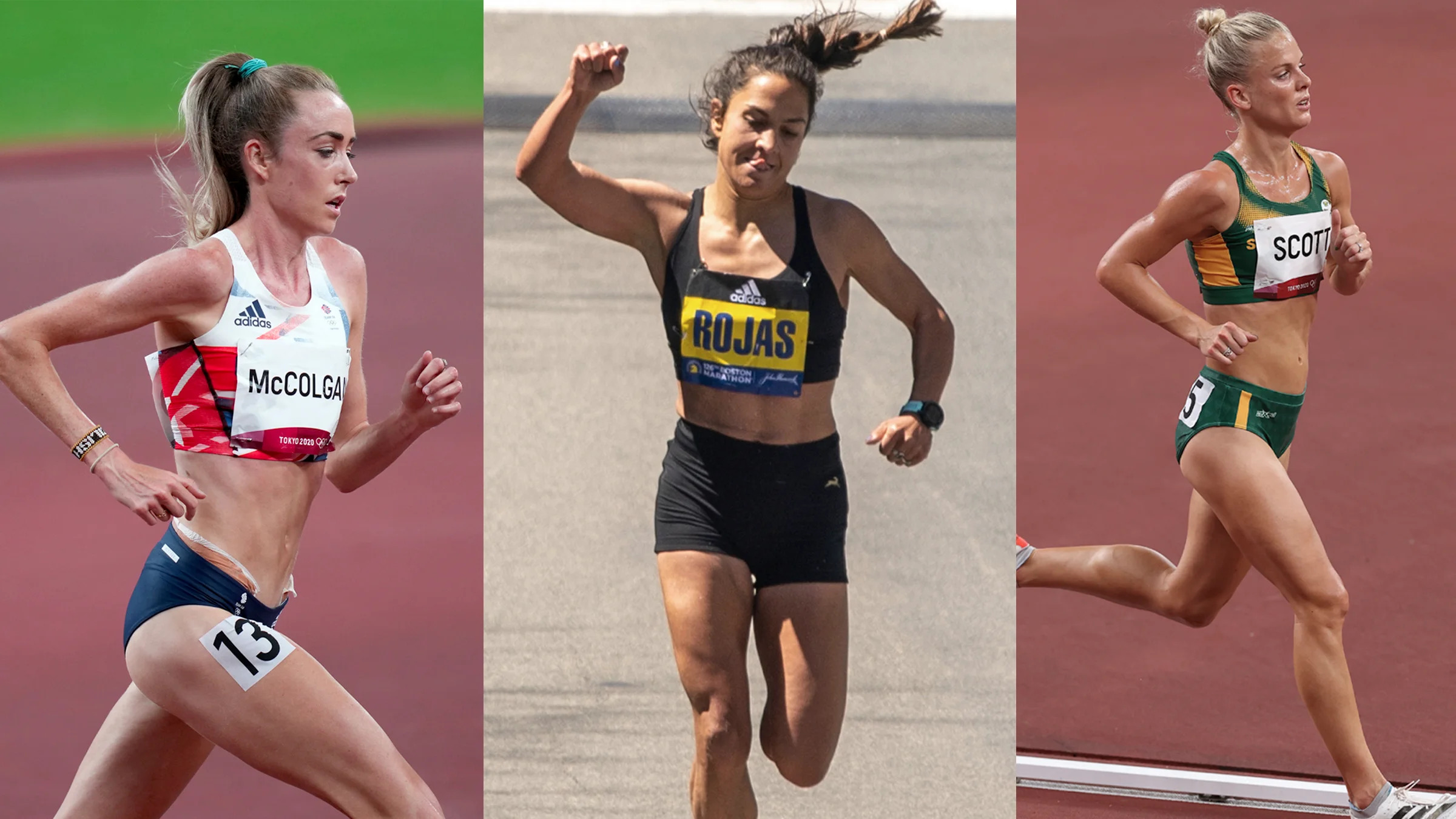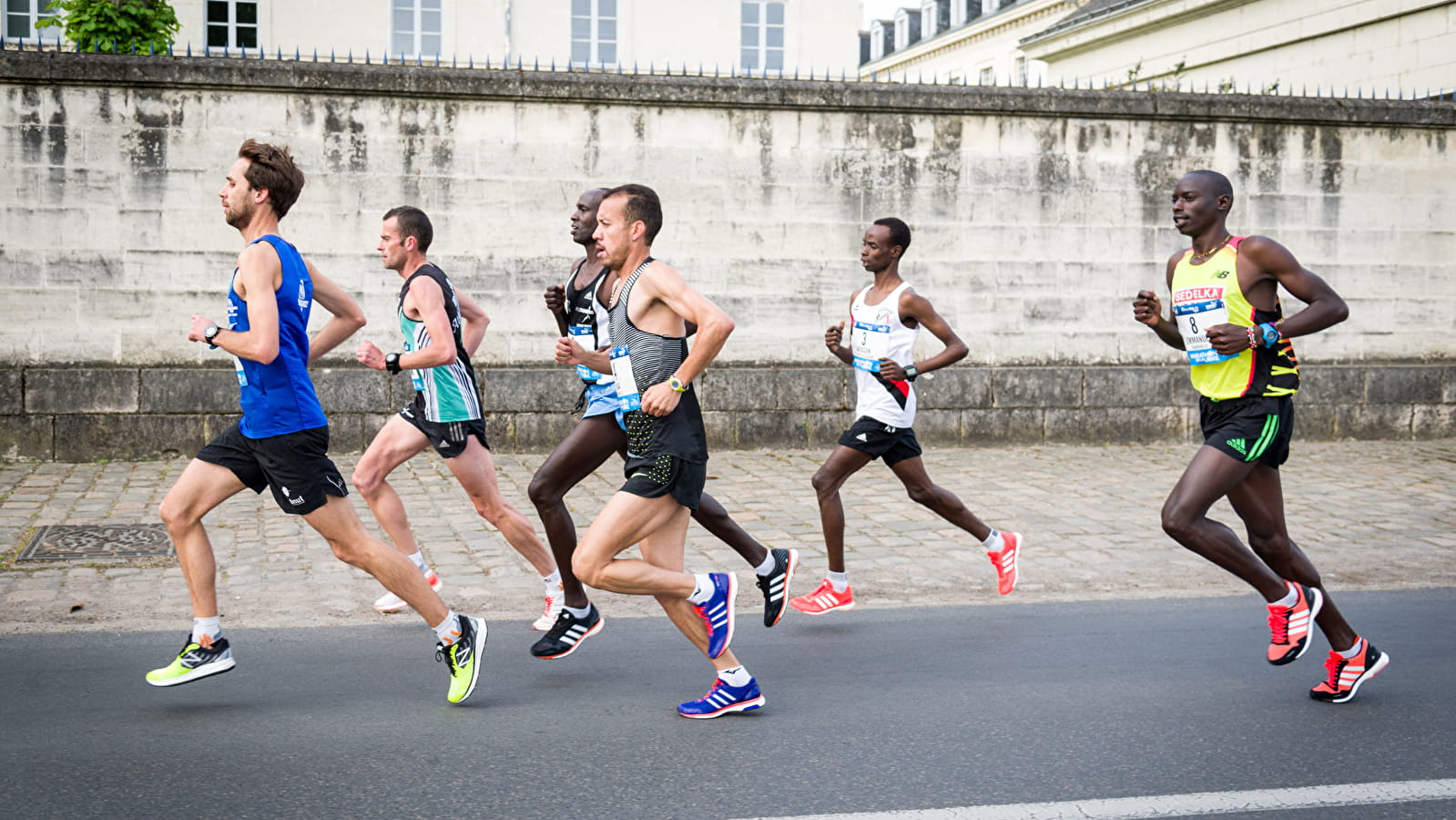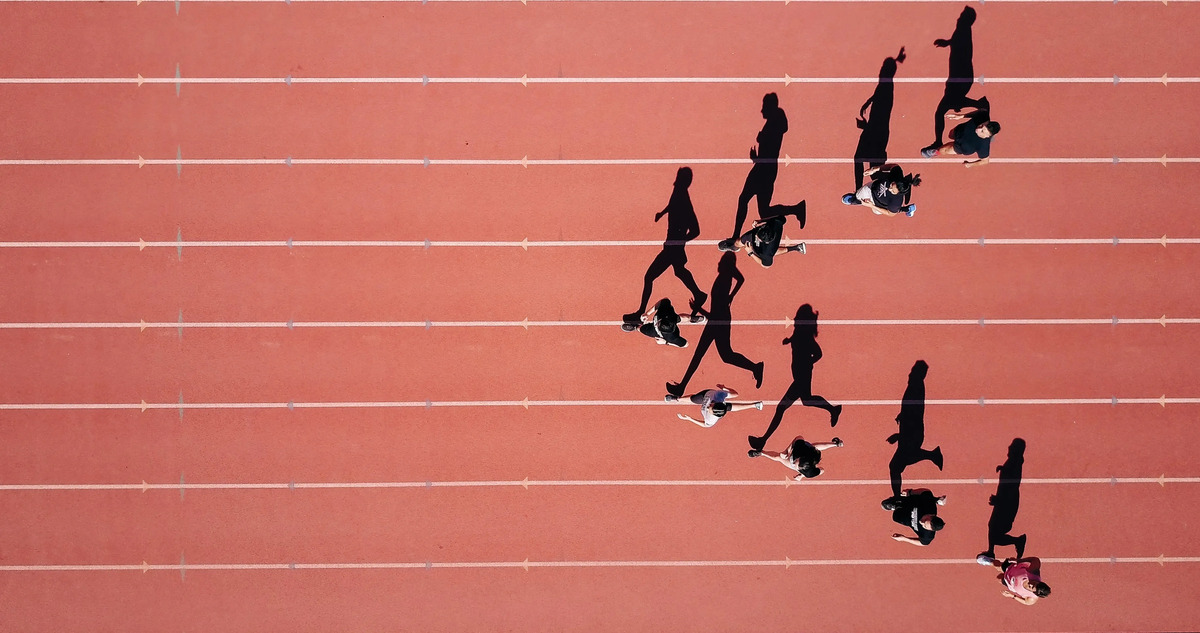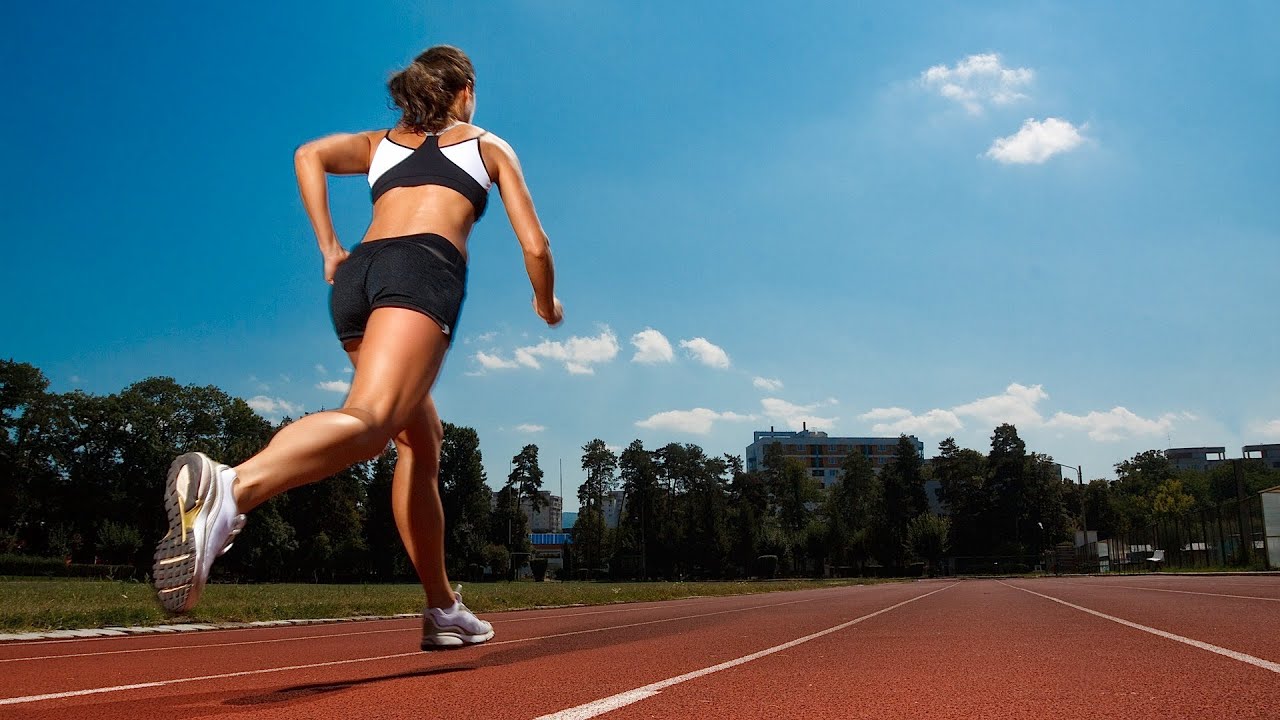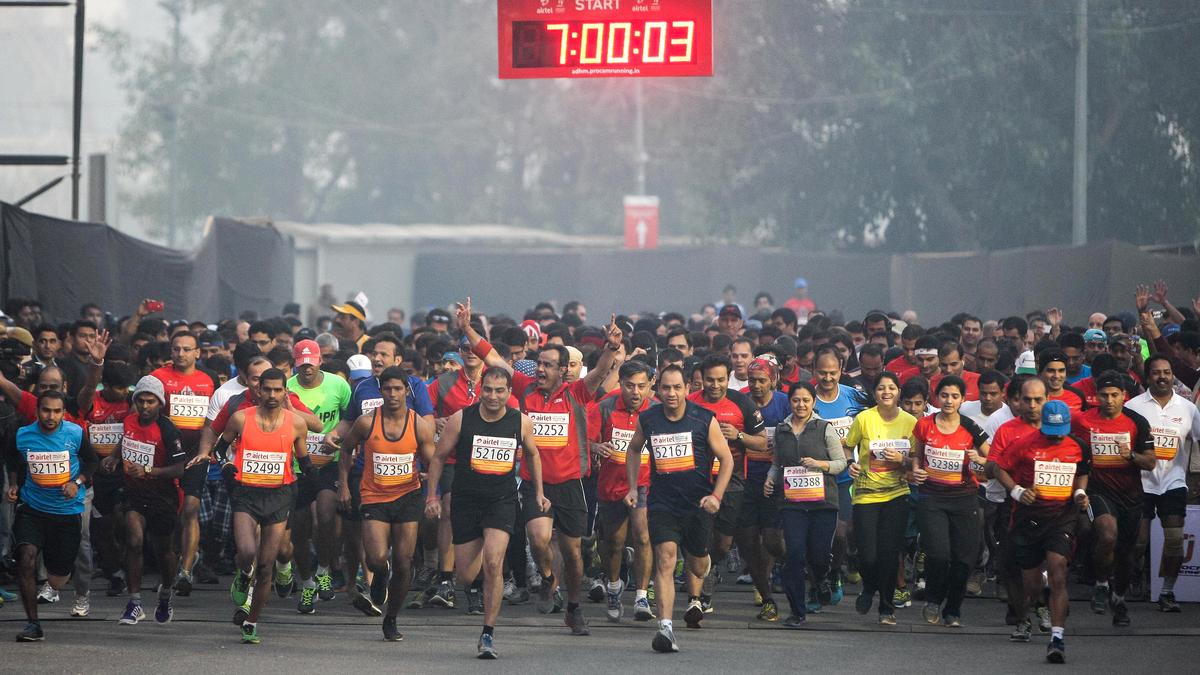

Featured
Why Are Indians Good At Distance Running
Modified: January 2, 2024
Discover why Indians excel at distance running in this featured article. Explore the unique factors contributing to their success and learn from their training methods.
Introduction
When it comes to long-distance running, India has emerged as a force to be reckoned with on the global stage. From dominating events like the Mumbai Marathon to achieving commendable performances in international competitions, Indian distance runners have proven their mettle time and again. This remarkable success has piqued the curiosity of sports enthusiasts and researchers, prompting the question: why are Indians so good at distance running?
The roots of India’s prowess in distance running can be traced back to its rich sporting heritage and culture. Historically, Indians have excelled in various athletics disciplines, showcasing their endurance and stamina. However, it is in recent years that the country has witnessed a surge in the popularity of long-distance running as a sport, and with it, an influx of talented athletes.
One of the key factors contributing to the success of Indian distance runners is the immense physical capabilities possessed by many individuals in the country. India’s diverse topography, ranging from the Himalayan mountains to the coastal plains, provides a natural training ground for building stamina and resilience. The high altitude regions, in particular, offer ideal conditions for altitude training, which has been proven to enhance performance in endurance events.
Moreover, Indian athletes often possess a genetic predisposition to excel in long-distance running. Many studies have shown that certain genetic variations can enhance aerobic capacity, which is crucial for endurance activities. The prevalence of these favorable genetic traits, combined with the rigorous training and diet regimes followed by Indian athletes, augments their performance and gives them a competitive edge.
In addition to physical factors, the cultural and socioeconomic influences in India play a vital role in shaping the success of distance runners. Despite the challenges of limited resources and access to proper training facilities, Indian athletes exhibit remarkable resilience and determination. Running, often embedded in Indian culture, is seen as a means of self-discipline and a way to connect with spirituality. This cultural significance provides motivation and fosters a deep sense of dedication among Indian distance runners.
Another crucial aspect contributing to the success of Indian distance running is the mentorship and coaching techniques employed in the country. Coaches emphasize a holistic approach to training, focusing not only on physical conditioning but also on mental fortitude and strategic race planning. This comprehensive training methodology helps Indian athletes develop a well-rounded skill set and adaptability, making them formidable competitors in the global arena.
Despite facing numerous challenges, Indian distance runners have achieved exceptional feats of success on a global scale. Athletes like P.T. Usha, Milkha Singh, and more recently, Hima Das, have become iconic figures, inspiring a new generation of Indian runners. With better support and infrastructure, there is no doubt that the future of Indian distance running is bright.
Throughout this article, we will delve deeper into the historical context, physical factors, cultural influences, training techniques, success stories, and the challenges and potential future of Indian distance running. So, let’s put on our running shoes and explore the fascinating world of Indian distance running!
Historical Context of Distance Running in India
The roots of distance running in India can be traced back to ancient times, where it was an integral part of the country’s sporting culture. The Rigveda, one of the oldest texts in the world, mentions running as a means of physical fitness and competition. In fact, running was considered a key component of military training, with soldiers participating in long-distance races to test their endurance and stamina. This early emphasis on distance running laid the foundation for India’s long-standing tradition in the sport.
During the colonial era, distance running started gaining prominence in India. British influence brought new athletic events to the country, including marathons and cross-country races. This exposure to international running events paved the way for Indian athletes to showcase their skills on a global platform.
One of the most iconic moments in Indian distance running history came in the 1960 Rome Olympics, when Milkha Singh, also known as the “Flying Sikh,” narrowly missed out on a medal in the 400 meters race. Despite this setback, Milkha Singh’s performance ignited a passion for running in India, inspiring generations of athletes to pursue the sport.
In the following decades, Indian athletes continued to make their mark in distance running. P.T. Usha, known as the “Golden Girl of Indian Athletics,” achieved remarkable success in the 1980s and 1990s. Her achievements, including numerous medals at the Asian Games and participation in the Olympics, put Indian distance running on the global map.
More recently, Indian distance runners have showcased their talent in prestigious events like the Mumbai Marathon and the Airtel Delhi Half Marathon. These races attract top international athletes and provide a platform for Indian runners to compete and excel. The rise of such events has further fueled the popularity of distance running in the country.
Today, India is witnessing a surge in the number of amateur and professional runners. The accessibility of running clubs and the emergence of dedicated training programs have contributed to the growth of the sport. Additionally, the advent of social media has played a crucial role in promoting distance running, with individuals sharing their running journeys and inspiring others to lace up their shoes and hit the tracks.
As Indian athletes continue to make strides in distance running, there is a growing recognition of the potential the country holds in the sport. With better infrastructure, training facilities, and support systems, India has the opportunity to establish itself as a powerhouse in long-distance running at the international level.
In the next sections, we will explore the physical factors, cultural influences, training techniques, success stories, and the challenges and potential future of Indian distance running. So, let’s dive deeper into the fascinating world of Indian distance running!
Physical Factors Contributing to Indian Distance Running Success
When it comes to distance running, physical factors play a vital role in an athlete’s success. In the case of Indian distance runners, several key elements contribute to their remarkable performances.
Firstly, India’s diverse topography serves as a natural training ground for building endurance and stamina. The country ranges from the majestic Himalayan mountains to the flat plains and coastal regions. This geographical variation allows Indian athletes to train in different terrains and altitude conditions. High-altitude regions, such as Leh and Gangtok, offer ideal settings for altitude training. The lower oxygen levels at higher altitudes stimulate the production of red blood cells, improving an athlete’s aerobic capacity and overall endurance.
Additionally, India’s hot and humid climate poses a unique challenge that Indian distance runners must overcome. The intense heat and humidity require athletes to adapt and develop strategies to maintain performance in such conditions. This adaptation to extreme weather conditions gives Indian athletes an advantage when competing in international races held in similar climates.
Genetic factors also contribute to Indian distance running success. Several studies have shown that certain genetic variations, particularly in genes related to oxygen utilization and muscle fiber composition, can enhance an athlete’s aerobic capacity and endurance performance. Indian athletes may possess a genetic predisposition to excel in distance running due to the prevalence of such advantageous genetic variations in the population.
In addition to genetic factors, diet plays a crucial role in the physical development of Indian distance runners. The traditional Indian diet, rich in plant-based proteins, whole grains, and a variety of fruits and vegetables, provides a solid nutritional foundation for athletes. Foods such as lentils, rice, millets, and ghee offer necessary carbohydrates for energy, while plant-based proteins from sources like lentils, chickpeas, and nuts aid in muscle recovery and repair. This nutrient-dense diet helps athletes maintain their energy levels and recover effectively, enhancing their performance in long-distance races.
The success of Indian distance runners can also be attributed to their inherent mental toughness and discipline. The sport of distance running requires immense focus, persistence, and the ability to endure physical discomfort. The cultural fabric of India, with its emphasis on discipline and dedication, instills these qualities in athletes from a young age. The mental fortitude cultivated through cultural influences helps Indian distance runners push through pain, stay motivated, and maintain a strong competitive spirit.
Overall, a combination of geographical advantages, genetic characteristics, a balanced diet, and a resilient mindset contributes to the success of Indian distance runners. These physical factors, often nurtured through rigorous training and proper coaching, propel Indian athletes to achieve remarkable performances in both domestic and international distance running events.
Next, we will explore the cultural and socioeconomic influences on Indian distance runners. So, let’s continue our journey through the fascinating world of Indian distance running!
Cultural and Socioeconomic Influences on Indian Distance Runners
The success of Indian distance runners is not solely attributed to physical factors but is also shaped by the cultural and socioeconomic influences prevalent in the country. These influences play a significant role in nurturing talent, fostering dedication, and motivating athletes to excel in the sport.
In Indian culture, running holds deep-rooted significance. Historical accounts and religious texts depict running as a form of physical fitness, discipline, and devotion. Running has been a part of religious traditions in India, with devotees undertaking long-distance pilgrimages on foot. This cultural association with running instills a sense of reverence and commitment in Indian athletes, driving them to push their limits and achieve their goals.
Furthermore, socio-economic factors contribute to the development of Indian distance runners. Many talented athletes come from modest backgrounds, facing limited access to resources and proper training facilities. Despite these challenges, Indian athletes exhibit remarkable resilience and determination. Extreme poverty and adversity often fuel their hunger for success, motivating them to work harder and seize every opportunity to chase their dreams.
Family support also plays a crucial role in the success of Indian distance runners. In many cases, families make significant sacrifices to enable their children to pursue athletics. Parents and siblings encourage and motivate aspiring athletes, providing the necessary emotional support throughout their journey. This strong familial backing creates a nurturing environment for Indian distance runners to develop their talent and strive for excellence.
Additionally, the emergence of role models and success stories has significantly impacted the culture of distance running in India. The achievements of renowned athletes like P.T. Usha, Milkha Singh, and Hima Das have inspired a new generation of Indian runners. These athletes serve as beacons of hope, proving that with determination and hard work, it is possible to compete at the highest level.
Advancements in technology and the rise of social media have also had a profound impact on the sport. Athletes now have greater visibility and can showcase their talent to a broader audience. Social media platforms serve as a means of self-expression, allowing athletes to share their training journeys and connect with fellow runners. This virtual community fuels a sense of camaraderie and inspiration among Indian distance runners.
In recent years, corporate support and sponsorships have also played a significant role in the development of Indian distance running. Companies have recognized the potential and popularity of the sport, providing financial assistance and sponsorship opportunities to deserving athletes. This support enables athletes to focus on their training and compete at international levels.
The cultural and socioeconomic influences on Indian distance runners create a unique environment that fosters dedication, resilience, and passion for the sport. These influences, combined with the physical factors we explored earlier, contribute to the exceptional performances demonstrated by Indian athletes in long-distance running.
Next, let’s explore the training and coaching techniques employed in Indian distance running that propel athletes towards success.
Training and Coaching Techniques in Indian Distance Running
The success of Indian distance runners can be attributed not only to their physical prowess and cultural influences but also to the training and coaching techniques employed to hone their skills. In recent years, India has witnessed significant advancements in the field of sports training, resulting in the emergence of world-class athletes.
One of the key aspects of training in Indian distance running is a holistic approach that encompasses various facets of an athlete’s development. Coaches emphasize the importance of building a solid aerobic base through consistent long-distance running. Gradual progressions in mileage and intensity help athletes improve their endurance over time.
Strength and conditioning exercises play a vital role in the training regimen of Indian distance runners. Coaches incorporate strength training programs tailored to the specific needs of long-distance runners, focusing on building core strength, leg power, and overall body stability. These exercises improve running economy, reducing the risk of injuries, and enhancing overall performance.
Mental conditioning is another area of emphasis in Indian distance running training. Coaches work with athletes to develop mental resilience, grit, and focus. Techniques such as visualization, mindfulness, and positive reinforcement are employed to help runners overcome challenges, maintain motivation, and perform at their best.
Interval training is a key component in the training regime of Indian distance runners. Coaches structure interval workouts that involve alternating periods of high-intensity efforts followed by recovery periods. This type of training enhances an athlete’s anaerobic capacity, allowing them to sustain faster speeds for longer durations.
Indian athletes also benefit from regular participation in local races and exposure to competitive environments. These races serve as valuable training opportunities, allowing athletes to practice race tactics, develop pacing strategies, and gain experience in a race setting. Participating in these events boosts the confidence of athletes and helps them familiarize themselves with different race scenarios.
Coaching techniques in Indian distance running also incorporate modern technological advancements. Many athletes use wearable devices and GPS trackers to monitor and analyze their training data. This data provides insights into pacing, heart rate, and other key metrics, aiding in optimizing training programs and race strategies.
Furthermore, supportive infrastructure and facilities have played a crucial role in the improvement of Indian distance running training. The establishment of specialized training centers, access to well-equipped gyms, and the availability of qualified coaches have all contributed to the development of athletes.
Overall, the training and coaching techniques implemented in Indian distance running focus on a comprehensive and balanced approach to an athlete’s development. By integrating physical conditioning, strength training, mental preparation, and exposure to competitive races, coaches enable athletes to reach their full potential and achieve remarkable feats of success.
Now, let’s take a closer look at some of the success stories of Indian distance runners, who have made their mark on the international stage.
Success Stories of Indian Distance Runners
Indian distance running has witnessed several remarkable success stories that have inspired and ignited a passion for the sport among athletes and fans alike. From record-breaking performances to podium finishes at international competitions, these athletes have put India on the map in the world of long-distance running.
P.T. Usha, often referred to as the “Payyoli Express,” is regarded as one of India’s greatest athletes. She achieved tremendous success in the 1980s and 1990s, representing India at multiple Olympics and Asian Games. Known for her lightning-fast speed and impeccable technique, Usha won numerous medals in events ranging from the 100 meters to the 400-meter hurdles, bringing glory to the nation.
Milkha Singh, famously known as the “Flying Sikh,” is a legendary figure in Indian distance running. Despite facing adversity, including witnessing the horrors of the Partition of India, Milkha Singh went on to become a national hero. His iconic race at the 1960 Rome Olympics, where he narrowly missed out on a medal in the 400 meters, remains etched in the memory of Indian sports enthusiasts. His remarkable journey inspired the 2013 Bollywood film “Bhaag Milkha Bhaag,” which showcased his determination and resilience.
More recently, Hima Das has emerged as a rising star in Indian athletics. Known as the “Dhing Express,” Das became the first Indian athlete to win a gold medal in a track event at the World U20 Championships. Her blistering speed and tenacity have propelled her to several victories, earning her accolades and making her a role model for aspiring Indian distance runners.
Other Indian athletes, such as Lalita Babar, Sudha Singh, and Gopi Thonakal, have also left their mark on international distance running. Babar became the first Indian woman to reach the finals of an athletics event at the Olympics, competing in the 3,000-meter steeplechase at the 2016 Rio Olympics. Singh, a national record holder in the same event, has consistently performed well at major international competitions. Thonakal created history by becoming the first Indian man to win the Asian Marathon Championships, achieving this feat at the 2017 edition held in Dongguan, China.
In addition to these individual success stories, the Airtel Delhi Half Marathon and the Tata Mumbai Marathon have become platforms for Indian distance runners to showcase their talent. Indian athletes routinely excel in these events, competing against some of the best runners from around the world and often finishing among the top ranks.
The success stories of these Indian distance runners highlight the incredible potential and talent present in the country. With their perseverance, dedication, and exceptional performances, these athletes have paved the way for a new generation of hopefuls, inspiring them to dream big and strive for excellence in distance running.
Now, as we have explored the success stories, let’s delve into the challenges and potential future of Indian distance running.
Challenges and Future of Indian Distance Running
While Indian distance running has witnessed significant progress and success in recent years, there are still challenges that need to be addressed to ensure continued growth and development of the sport.
One of the major challenges faced by Indian distance runners is the lack of adequate infrastructure and training facilities. Many athletes train under suboptimal conditions, with limited access to tracks, high-quality equipment, and professional coaching. The establishment of state-of-the-art training centers and the provision of better facilities will help create an environment conducive to the athletes’ development.
Socioeconomic factors also pose challenges in the development of Indian distance running. The sport requires sustained financial support for training, travel, and participation in competitions. Many talented individuals come from economically disadvantaged backgrounds, making it difficult for them to pursue athletics without external support. Increased corporate sponsorships and government funding can play a crucial role in overcoming these financial barriers.
Another key challenge is the need for more qualified coaches and sports science professionals. Coaches with expertise in distance running and knowledge of the latest training methodologies are essential for the proper development and guidance of athletes. Investing in coach education programs and providing opportunities for coaches to gain international exposure and certifications will enhance the quality of coaching in Indian distance running.
In addition, raising awareness and promoting the sport at the grassroots level is vital. Engaging young talent, particularly in schools and colleges, and providing them with opportunities to participate in organized running events will help identify and nurture the next generation of Indian distance runners. Building a robust talent identification and development system will ensure a steady pipeline of athletes entering the sport.
The future of Indian distance running holds immense potential. With the right infrastructure support, increased participation, and improved coaching and training techniques, Indian athletes have the ability to compete at the highest levels and earn podium finishes in international competitions.
Moreover, as the popularity of distance running continues to grow globally, India has the opportunity to attract more international athletes to participate in domestic races. This would not only raise the level of competition but also provide Indian athletes with valuable exposure and a chance to compete against world-class runners on their home turf.
The future also holds promise for advancements in technology and sports science that can further enhance training methodologies and performance analysis. Integration of wearable devices, data analytics, and innovative training techniques will aid in optimizing training programs and maximizing the potential of Indian distance runners.
As Indian distance running continues to evolve, it is essential to maintain a supportive ecosystem that recognizes and nurtures talent, provides proper training facilities, and offers financial assistance to aspiring athletes. By addressing the challenges and capitalizing on the potential, India can establish itself as a force to be reckoned with in the world of long-distance running.
Now, let’s wrap up our exploration of Indian distance running with a brief summary of the key points discussed.
Conclusion
Indian distance running has emerged as a force to be reckoned with on the global stage, driven by a combination of physical factors, cultural influences, training techniques, and the resilience of its athletes. The success stories of legendary athletes like P.T. Usha, Milkha Singh, and more recent stars like Hima Das have inspired a new generation of Indian runners and underscored the potential the country holds in the sport.
The physical factors contributing to Indian distance running success, such as diverse topography, genetic predisposition, and a balanced diet, provide a solid foundation for athletes to excel. The cultural and socioeconomic influences, including the deep-rooted significance of running in Indian culture and the determination of athletes from modest backgrounds, further propel their performance.
Training and coaching techniques in Indian distance running have evolved to encompass holistic approaches, incorporating physical conditioning, strength training, mental resilience, and exposure to competitive races. Improving infrastructure, providing necessary funding, and investing in coach education will further support the growth and development of Indian distance runners.
Though challenges in the form of limited infrastructure, socioeconomic barriers, and a need for qualified coaches persist, the future of Indian distance running is promising. Continued support, awareness, grassroots engagement, and advancements in sports science and technology will enable Indian athletes to compete at the highest levels and earn international recognition.
As India moves forward, it has the potential to establish itself as a powerhouse in long-distance running, building upon the legacy of its past achievements and the determination and talent of its current and future athletes.
So, let’s lace up our shoes, embrace the challenges, and continue to celebrate the inspiring world of Indian distance running!

